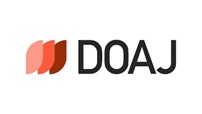Abstract
Constructing attractive bundle offers depends on more than an understanding of the distribution of consumer preferences. Consumers are also sensitive to the framing of price information in a bundle offer. In classical economic theory, consumers ``utility should not change as long as the total price paid stays same. However, even when total prices are identical, consumers`` preferences toward a bundle product could be different depending on the format of price presentation and the locus of price discount. A weighted additive model predicts that the impact of a price discount on the overall evaluation of the bundle will be greater when the discount is assigned to the more important product in the bundle (Yadav 1995). Meanwhile, a reference dependent model asserts that it is better to assign a price discount to a tie-in component that has a negative valuation at its current offer price than to a focal product that has a positive valuation at its current offer price (Janiszewski and Cunha 2004). This paper has expanded previous research regarding price discount presentation format, investigating the reasons for mixed results of prior research and presenting new mechanisms for price discount framing effect. Prior research has hypothesized that bundling is used to sell a tie-in component with an offer price above the consumer`s reference price plus a focal product of the same offer price with reference price (e g Janiszewski and Cunha 2004). However, this study suggests that bundling strategy can be used for increasing product`s attractiveness through the synergy between components even when offer prices of bundle components are the same with reference prices. In this context this study employed various realistic bundle sets with same price between offer price and reference price in the experiment. Hamilton and Srivastava (2008) demonstrated that when evaluating different partitions of the same total price, consumers prefer partitions in which the price of the high-benefit component is higher. This study determined that their mechanism can be applied to price discount presentation formats. This study hypothesized that price discount framing effect depends not on the negative perception of tie-in component with offer price above reference price but rather on the consumers ``perceived consumption benefit in bundle product. This research also hypothesized that preference for low- benefit discount mechanism is that perceived consumption benefit reduces price sensitivity. Furthermore, this study investigated how consumers`` concern for quality in a price discount--a factor not considered in previous research--influences price discount framing. Yadav (1995)`s experiment used only one magazine bundle of relatively low quality uncertainty and could not show the influence of perceived uncertainty of quality. This study assumed that as perceived uncertainty of quality increases, the price sensitivity mechanism for assigning the discount to low-benefit will increase. Further, this research investigated the moderating effect of uncertainty of quality in price discount framing The results of the experiment showed that when evaluating different partitions of the same total price and the same amount of discounts, the partition that discounts in the price of low benefit component is preferred to the partition that decreases the price of high benefit component. This implies that price discount framing effect depends on the perceived consumption benefit. The results also demonstrated that consumers are more price sensitive to low benefit component and less price sensitive to high benefit component, Furthermore, the results showed that the influence of price discount presentation format on the evaluation of bundle product varies with the perceived uncertainty of quality in high consumption benefit, As perceived uncertainty of quality gradually increases, the preference for discounts in the price of low consumption benefit decreases. Besides, the results demonstrate that as perceived uncertainty of quality gradually increases, the effect of price sensitivity in consumption benefit also increases. This paper integrated prior research by using a new mechanism of perceived consumption benefit and moderating effect of perceived quality uncertainty, thus providing a dearer explanation for price discount framing effect.
Recommended Citation
Im, Mee Ja
(2012)
"묶음제품 가격 할인 제시 프레이밍 효과: 지각된 소비 혜택과 품질 불확실성의 영향을 중심으로,"
Asia Marketing Journal: Vol. 14
:
Iss.
1
, Article 4.
Available at: https://doi.org/10.53728/2765-6500.1472
Creative Commons License

This work is licensed under a Creative Commons Attribution 4.0 License.





